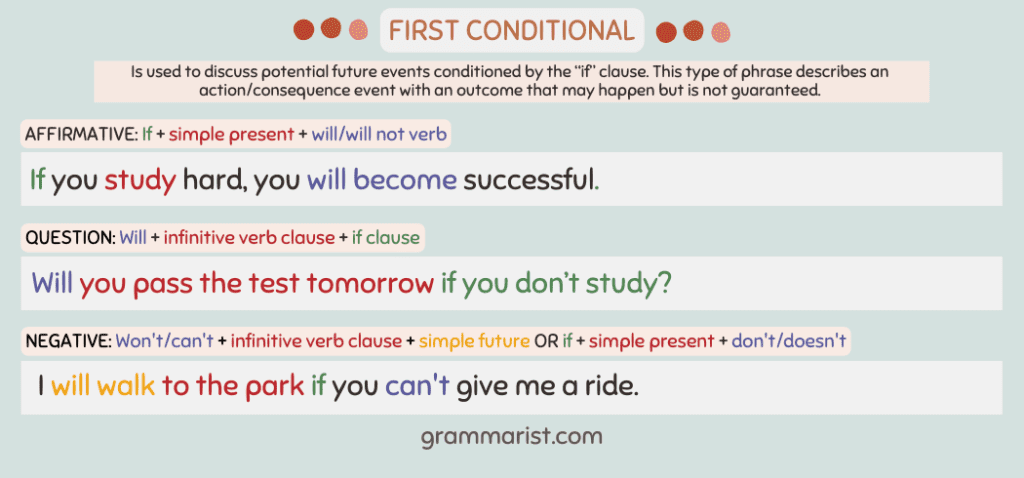Would you like to improve your English language skills? If so, you’re in luck. My quick guide offers a bunch of exercises to help you learn and practice first conditional sentences. Plus, there’s a printable PDF for you to download and use. So let’s get started!
What Is the First Conditional?

The first conditional expresses a potential event that’s likely to happen but not guaranteed. The present simple tense is usually used in the if clause, whereas the simple future tense is used in the main phrase, representing the most likely outcome.
This is how we communicate that in the event of a particular circumstance, as described in the if clause, a particular outcome will most likely occur at some point in the future.
Example:
- If you study, you’ll pass the exam.
How to Use the First Conditional
Creating the first conditional is very simple. The easier formula is if + present simple + will/will not + verb.
For example:
- If you are sad, I will try to cheer you up.
- If you’re on a diet, I will not eat candy in front of you.
It’s also important to note that the second part of a first conditional sentence can also use a modal or imperative verb instead of “will.”
Examples:
- We can’t go to the beach if it rains.
- If you’re tired, you have to go to sleep.
Bottom Line
The first conditional is used to describe possible future events. The word “if” can be replaced with other words or phrases, such as “when,” “whenever,” or “provided that.” The first conditional is a relatively easy grammar point to learn, and it can be used in various situations. For instance, it can make predictions, give warnings, or express desires.